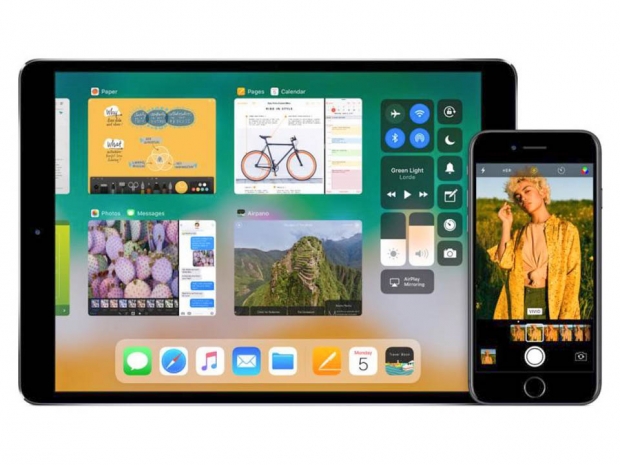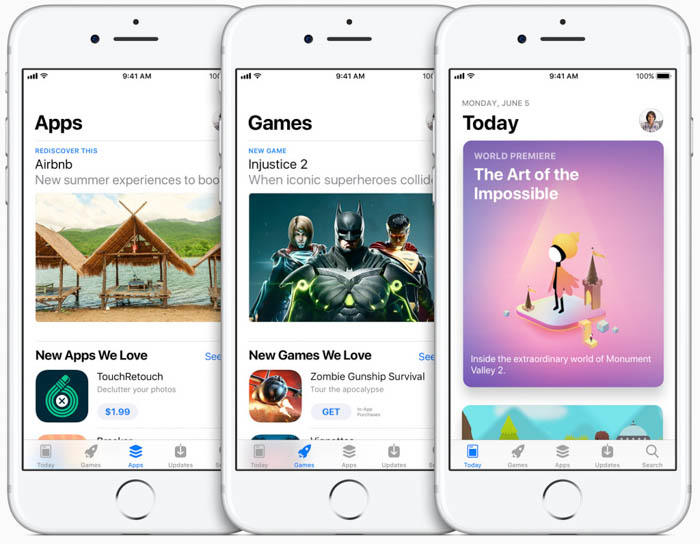
For the first time since its introduction in 2007, the App Store has now been optimized with a card-based design and tabs that transform the layout into more of a basic newsfeed than anything else. A new “Today” section is powered by a team of full-time editors around the world who give insights into the latest trending apps with a “passion for what’s next.” A “Daily Stories” section will now let the fruit-themed toymaker’s editorial team describe apps with a storyteller’s appeal, while the “Enhanced Search” feature will now display app results that include these editorial stories, tips and tricks, and app lists.
“Files” – at last, a dedicated file manager
Apple has described this release as “a monumental step for iPhone, and a giant leap for iPad.” In an effort to retain more advanced users who might be thrown off by the operating system’s Fischer Price appeal in comparison to Android, the company has finally included a native file manager. The “Files” app will now give iPad users drag-and-drop support between and within apps, access to a file system browser, and a way to set up spaces with multiple app windows. But of course, iPhone users are excluded for now. The company wants to focus on ramping up iPad productivity at a time when it faces increased competition from the Microsoft Surface and similar devices.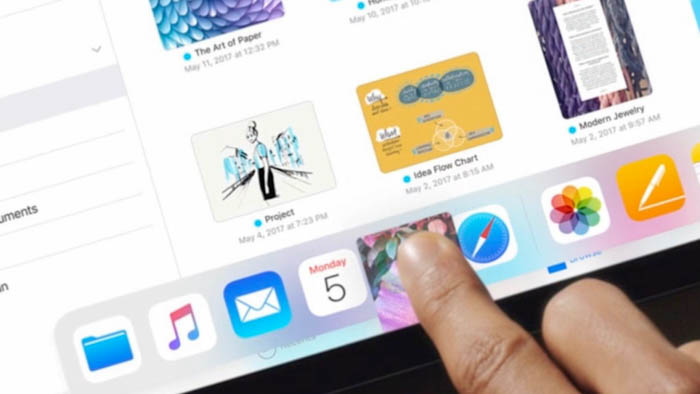
More specifically, the drag and drop feature is made possible by an expanded dock that can hold more applications than the previous version under iOS 10. Users will also be able to browse files store on cloud storage systems, including iCloud Drive, Box, Dropbox, and Microsoft OneDrive.
Updated Camera app
Apple has also updated the Camera all to include refined video and image compression, an improved Portrait Mode with support for low-light photography, and a new Depth API for developers. Using advancement in machine learning, the Memories section of the Photos app can now automatically reorient images based on phone orientation and learn what objects to focus on. The popular Live Photos feature, introduced with iPhone 6S, now includes trimming and a variety of loops and long exposure effects to make it more engaging.
Additionally, iOS 11 also switches from H.264 to H.265 HEVC for video capture, enabling twice the efficiency for more storage room, and transitions to the HEIF image format on the iPhone 7/7 Plus and later to achieve additional space-saving over traditional JPEGs. It is unclear, however, how users will be able to export JPEG images for sharing in a more common file format.
ARKit
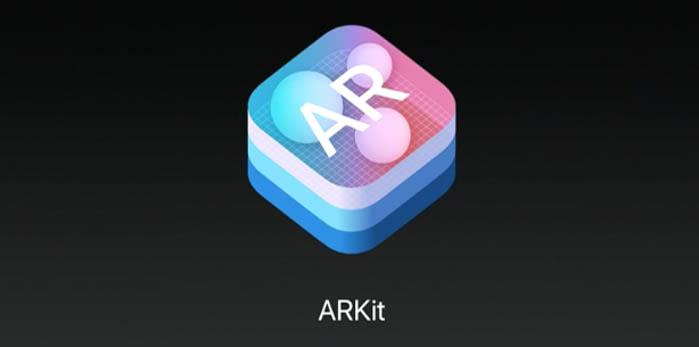
The company announcing a new augmented reality kit for developers, called AR Kit, that will enable the development of Pokémon Go-related titles. The SDK will enable “fast and stable motion tracking” that allows objects to be placed in real space. It will make use of an iPhone or iPad’s sensors and cameras to produce much more complex gaming experiences, complete with ambient lighting estimation, scale estimation, and plane estimation with basic boundaries.
Until now, Apple has stayed relatively quiet on AR prospects, though a 2016 interview with CEO Tim Cook revealed a keen interest in investment. While it faces increased competition from Google’s Project Tango, which has been around since June 2014, that platform is only available on select Android devices. Apple’s Craig Federighi insists that ARKit will become “the largest AR platform in the world” due to its support on all devices compatible with iOS 11.
iMessages suddenly becomes less secure
In an effort to support real-time synchronization of messages between several Mac and IOS devices, Apple is now bringing iMessages to its iCloud platform. Starting with iOS 11, users will be able to sign in on any of their devices and see a full conversation history of their previously sent iMessages. In turn, messages deleted on an iPhone will now be deleted on an Apple desktop or notebook, and vice versa. While this feature is useful for the sake of convenience, it poses a major security threat that downgrades the overall security of Apple’s once-touted end-to-end encryption scheme. Today, each iMessage sent without is encrypted by a unique key generated from the sending device, and Apple does not store a copy of this key in iCloud. The key exists locally on the device, which stores the messages in an unencrypted format until they are transmitted. In other words, older messages cannot be transferred from iCloud to a newly-added device, and Apple cannot decrypt anyone’s messages because it does not have the uniquely generated keys to do so – even under federal law. This is the basic protection it fought so hard to protect during an October 2015 court order that requested FBI access to unlock and decrypt an iPhone 5C linked to a San Bernardino, California shooting spree.
In other words, Apple owners who value their fourth amendment rights will now need to disable iCloud-synchronization of iMessages on each device, while iCloud users are strongly encouraged to enable two-factor authentication.
Peer-to-peer payments
Over the past few years, Apple has faced uphill competition from peer-to-peer payment apps such as Venmo, PayPal, Square Cash and Facebook Messages. Apple Pay, which launched in September 2014 with the iPhone 6, is now accepted in more than 20 million retail stores, restaurants and gas stations worldwide, and used by over 12 million people regularly as of last year.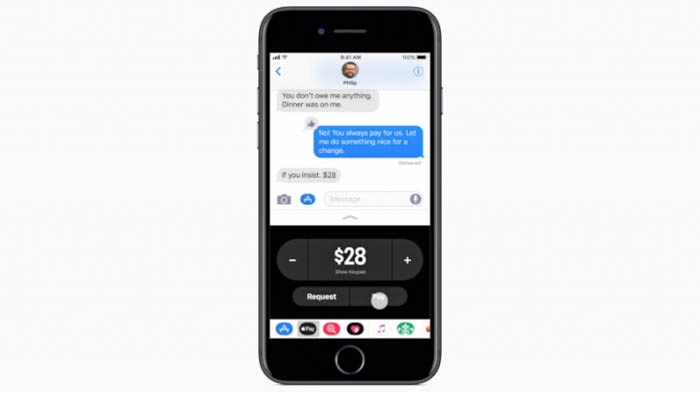
The company is now integrating Apple Pay directly into iMessage, enabling users to send money direction with a conversation using Touch ID for security (yet another reason to disable iCloud synchronization). Once money is transferred, it will be transferred to an Apple Pay cash card that can be sent to friends, family, or deposited directly into the bank. The feature will be integrated directly within iOS 11 and WatchOS 4, though there is no word on whether it will charge the sender or recipient for the service.
Siri gets a more natural voice, real-time translation
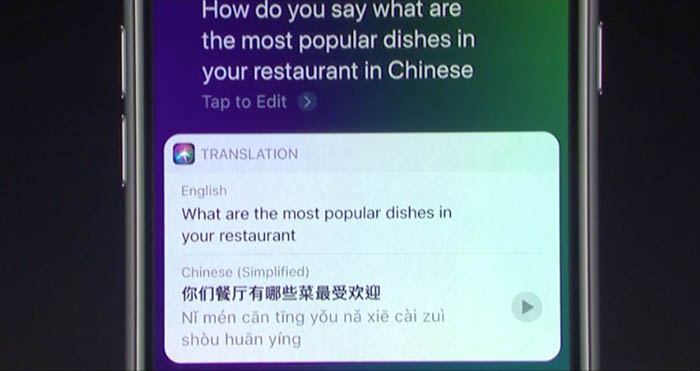
With iOS 11, the company’s voice assistant Siri has also received a slightly updated design with more natural sounding male and female voices, all thanks to some new deep learning techniques. The feature has also received a new beta translation mode, allowing users to translate between English, Chinese, French, German, Italian and Spanish. Apple says more languages will be added in the coming months.
Another addition to Siri is a new on-device learning system that allows her to gain insights from a user’s daily habits. Similar to Google Assistant, which debuted in last October, the algorithms will determine context and offer suggestions depending on circumstances and time of day. The company says that user data will be synced across all devices with end-to-end encryption.
Redesigned Control Center
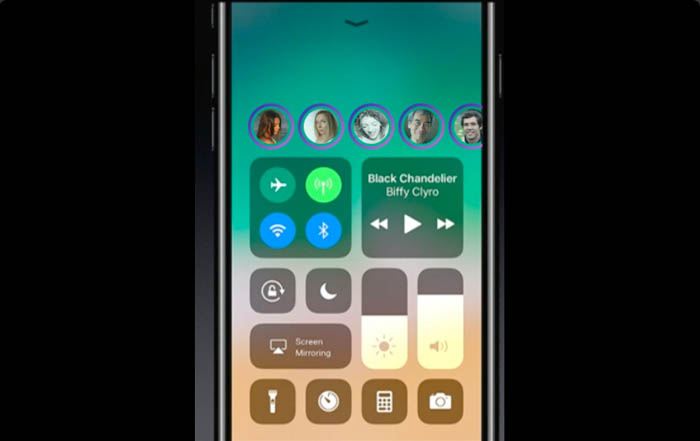
The Control Center, which was heavily modified in IOS 10, also gets another overhaul with IOS 11. This time, most will notice that the buttons have been squished into a single page, while others may be thrown off by the rather asymmetrical layout. Control Center now includes Voice Memos, Home controls, support for 3D Touch to unlock more commands, and notifications that are mirrored after unlocking, to name a few.
Other new features – “Do Not Disturb While Driving,” AirPlay 2, Shared Up Next
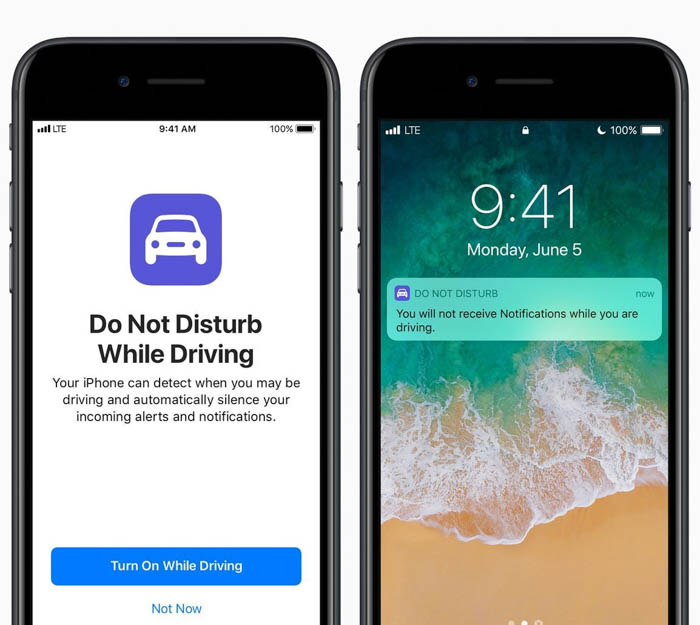
Apple is also introducing an optional feature in IOS 11 called Do Not Disturb While Driving to prevent distracted drivers from receiving alerts and notifications. This feature is a substitute for those who do not know how to enable Airplane Mode and should be regarded as a first measure of prevention from fatal road accidents and close encounters with pedestrians or cyclists.
AirPlay 2 is a new protocol that will enable HomeKit to communicate with speakers, including those from Apple-owned Beats, Bose, Bang & Olufsen, and a number of other manufacturers. The update also enables multi-room audio controls from a single device, just as a home theater receiver’s “Zone 2” mode would provide. Apple hinted that third-party audio apps can also take advantage of AirPlay 2, which opens up the possibility for Google Play Music or Spotify to control song streaming at some point.
Shared Up Next is a new Apple Music feature that makes it easier for users to share playlists with DJs at parties and events, or with other users in a crowded room. Apple Music subscribers will be able to listen to what their friends are playing, while third-party developers can now incorporate the feature into their own apps.
Other features not mentioned during the keynote include a redesigned lockscreen with bolder font, a one-handed keyboard mode, Type to Siri, bolder text, and the ability to “Offload Unused Apps” after a specified amount of time.
Available in Fall
Apple’s iOS 11 is now available as a public beta to developers and will be available later this Fall with the introduction of an updated iPhone lineup.

